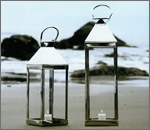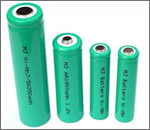Nickel is a chemical element, with the chemical symbol Ni and atomic number 28. It is a silvery-white lustrous metal with a slight golden tinge. It is one of the four ferromag

netic elements at about room temperature, other three being iron, cobalt and gadolinium. Its use has been traced as far back as 3500 BC, but it was first isolated and classified as a chemical element in 1751 by Axel Fredrik Cronstedt, who initially mistook its ore for a copper mineral. Its most important ore minerals are laterites, including limonite and garnierite, and pentlandite. Major production sites include Sudbury region in Canada, New Caledonia and Norilsk in Russia. The metal is corrosion-resistant, finding many uses in alloys, as a plating, in the manufacture of coins, magnets and common household utensils, as a catalyst for hydrogenation, and in a variety of other applications. Enzymes of certain life-forms contain nickel as an active center making the metal essential for them.
The electronic configuration of isolated nickel atom is counterintuitive: direct investigation finds that the predominant electron structure of nickel is [Ar] 4s1 3d9, which is the more stable form because of relativistic effects. Whereas Hund's rule, which works well for most other elements, predicts an electron shell structure of [Ar] 3d8 4s2 (the symbol [Ar] refers to the argon-like core structure). This latter configuration is found in many chemistry textbooks and is also written as [Ar] 4s2 3d8, to emphasize that the 3d shell is the electron shell being filled by the highest-energy electrons.
Nickel is a silvery-white metal with a slight golden tinge that takes a high polish. It is one of only four elements that are magnetic at or near room temperature. Its Curie temperature is

355 °C that is nickel is non-magnetic above this temperature. The unit cell of nickel is a face centered cube with the lattice parameter of 0.352 nm giving an atomic radius of 0.124 nm. Nickel belongs to the transition metals and is hard and ductile. It occurs most often in combination with sulfur and iron in pentlandite, with sulfur in millerite, with arsenic in the mineral nickeline, and with arsenic and sulfur in nickel galena.
Nickel is commonly found in iron meteorites as the alloys kamacite and taenite. Similar to the elements chromium, aluminium and titanium, nickel is a very reactive element, but is slow to react in air at normal temperatures and pressures due to the formation of a protective oxide surface. Due to its permanence in air and its slow rate of oxidation, it is used in coins, for plating metals such as iron and brass, for chemical apparatus, and in certain alloys such as German silver.
Nickel is chiefly valuable for the alloys it forms, especially many superalloys, and particularly stainless steel. Nickel is also a naturally magnetostrictive material, meaning that in the presence of a magnetic field, the material undergoes a small change in length. In the case of nickel, this change in length is negative (contraction of the material), which is known as negative magnetostriction and is on the order of 50 ppm. Nickel is also used as a binder in the cemented tungsten carbide or hardmetal industry and used in proportions of six to 12% by weight. Nickel can make the tungsten carbide magnetic and adds corrosion-resistant properties to the cemented tungsten carbide parts, although the hardnesses are lower than parts made of the binder cobalt.


